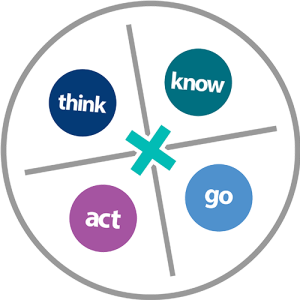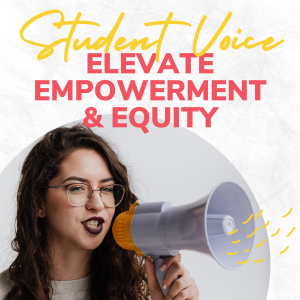[vc_row][vc_column][vc_single_image image=”45060″ img_size=”full”][vc_column_text]Inflexion recently hosted a fascinating online session with four visionary school administrators to find out how they’re leading through the trials of distance learning. They shared how their large, diverse California and Oregon high schools are continuing to make progress on school equity issues at a time of chaos.[/vc_column_text][ultimate_spacer height=”24″][vc_column_text]
Watch highlights from the Innovating for Equity Panel
[/vc_column_text][vc_video link=”https://www.youtube.com/playlist?list=PLvG0jDb8EuJUTu0xY_5l42YkQg4VMO0Jh” align=”center”][ultimate_spacer height=”24″][vc_column_text]
Five strategies school leaders are using
Here are five strategies they’re focused on so students furthest from opportunity don’t fall even further behind in the era of distance learning. We’ve included “try this” tactics these leaders are using with success. They are approaches that don’t require schools to put lots of new processes or structures in place—but can make a very big difference for students.[/vc_column_text][info_list style=”circle with_bg” icon_bg_color=”#00bcb4″ icon_color=”#ffffff” font_size_icon=”24″ eg_br_width=”1″][info_list_item list_title=”Prioritize social-emotional connection” icon_type=”custom” icon_img=”id^44625|url^https://inflexion.org/wp-content/uploads/2020/01/circle-1-for-web.png|caption^null|alt^null|title^circle 1 for web|description^null”]Students are coping with so many stresses at once—pandemic health threats, a difficult economy, natural disasters like wildfires and hurricanes, separation from their friends. They need connection with supportive adults outside their homes. This goes double for working students, moderate to severe special ed kids, and ELL students.
Try this: Change up your approach to non-instructional time to give plenty of opportunity for students to connect 1:1 with teachers. Livingston High near Merced, CA adjusted the school schedule to carve out short periods during morning classes for IEP students to get their minutes and support. Southridge High in Beaverton, OR started a weekly podcast so kids and families can tune in to “what’s happening with the Skyhawks,” and incoming ninth graders who have never even set foot in the building can feel part of their new school. Teachers can also create welcoming rituals and optimistic closures to each and every session, class period, and Zoom call, with a focus on making social-emotional connection.[/info_list_item][info_list_item list_title=”Help meet students’ basic needs first” icon_type=”custom” icon_img=”id^44624|url^https://inflexion.org/wp-content/uploads/2020/01/circle-2-for-web.png|caption^null|alt^null|title^circle 2 for web|description^null”]Circumstances today are highlighting disparities in schools that have been with us for a long time. And some students are focused more on food security, staying healthy, and being providers of income for their families than on cracking the books. Schools are well aware of this hierarchy of needs.
Try this: Ocean View High in Huntington Beach, CA is using a simple shared Google Doc as an online referral form where teachers can track calls made to students’ homes. They match information they gather with learner profile traits to identify specific student learning needs. When kids go dark on them, they make home visits. The emphasis is on keeping kids connected to school, and making sure they are safe and healthy.[/info_list_item][info_list_item list_title=”Supply kids the tools needed for remote learning” icon_type=”custom” icon_img=”id^44626|url^https://inflexion.org/wp-content/uploads/2020/01/circle-3-for-web.png|caption^null|alt^null|title^circle 3 for web|description^null”]Kids coming to public school often don’t fit the mold for distance learning, whether they’re IB/AP, special ed or ELL students. Many are low income, and may not have connected devices or internet access at home.
Try this: Ocean View High School has been printing tons of packets for special ed students. Merced Union High School District is directing CARES federal COVID relief money to technology needs, providing Mi-Fi (mobile hotspots) for every student and teacher. Zoom training for teachers and webcams so students and teachers can see one another are other priority investments. Livingston High hosts online “Coffee with the Principal” sessions in English and Spanish to maintain connection with students and parents.[/info_list_item][info_list_item list_title=”Make learning relevant to today” icon_type=”custom” icon_img=”id^45064|url^https://inflexion.org/wp-content/uploads/2020/09/circle-4-for-web.png|caption^null|alt^null|title^circle 4 for web|description^null”]It’s not simple to engage students and create a sense of belonging at school when everything’s being delivered remotely. Students are also highly attuned to the social unrest happening in their communities. It’s essential to keep learning real, and help students discover how they fit in this disrupted world. This can help drive student ownership of their own learning.
Try this: Merced Union HSD is urging teachers to bring the real-life lessons of the pandemic and social justice movements into learning modules. Students in Ocean View High’s district are working to change what’s taught in classrooms, so that when a kid comes into class, they see themselves in the literature and the books. Livingston High is adopting the Nurtured Heart Approach, a program that helps students and teachers focus on positive reinforcement and deenergize negative behavior[/info_list_item][info_list_item list_title=”Allow educators to prioritize teacher-student relationships” icon_type=”custom” icon_img=”id^45065|url^https://inflexion.org/wp-content/uploads/2020/09/circle-5-for-web.png|caption^null|alt^null|title^circle 5 for web|description^null”]Teachers are building the plane as they fly it, when it comes to remote education. They’re transforming how they do their jobs, managing their home lives, and coping with the many stressors in their communities, while they work to help students adapt, at a distance. A lot are no doubt thinking, this isn’t what I signed up for.
Try this: Content knowledge is still important right now. Compelling lessons are part of how teachers can reach out, pull students in and keep them actively engaged. But give teachers permission to focus on connection and on doing things differently. Leaders can make it explicit that connection and creating a sense of belonging for students are where most energy needs to be for the here and now.[/info_list_item][/info_list][ultimate_spacer height=”24″][vc_column_text]
An historic moment for American schooling
The coronavirus pandemic has put a spotlight on inequities in access to good education. But it’s also presented schools with a golden opportunity to rethink their curricula and systems. Schools have a chance to examine whether their content is student centered, and if they are truly supporting the needs of ALL students. Yes, social distancing, school disruption, and unrest are adding to the stresses on the disadvantaged and the differently abled. The silver lining is that schools can use this moment to reimagine who they are and what students really need to know.[/vc_column_text][/vc_column][/vc_row]




